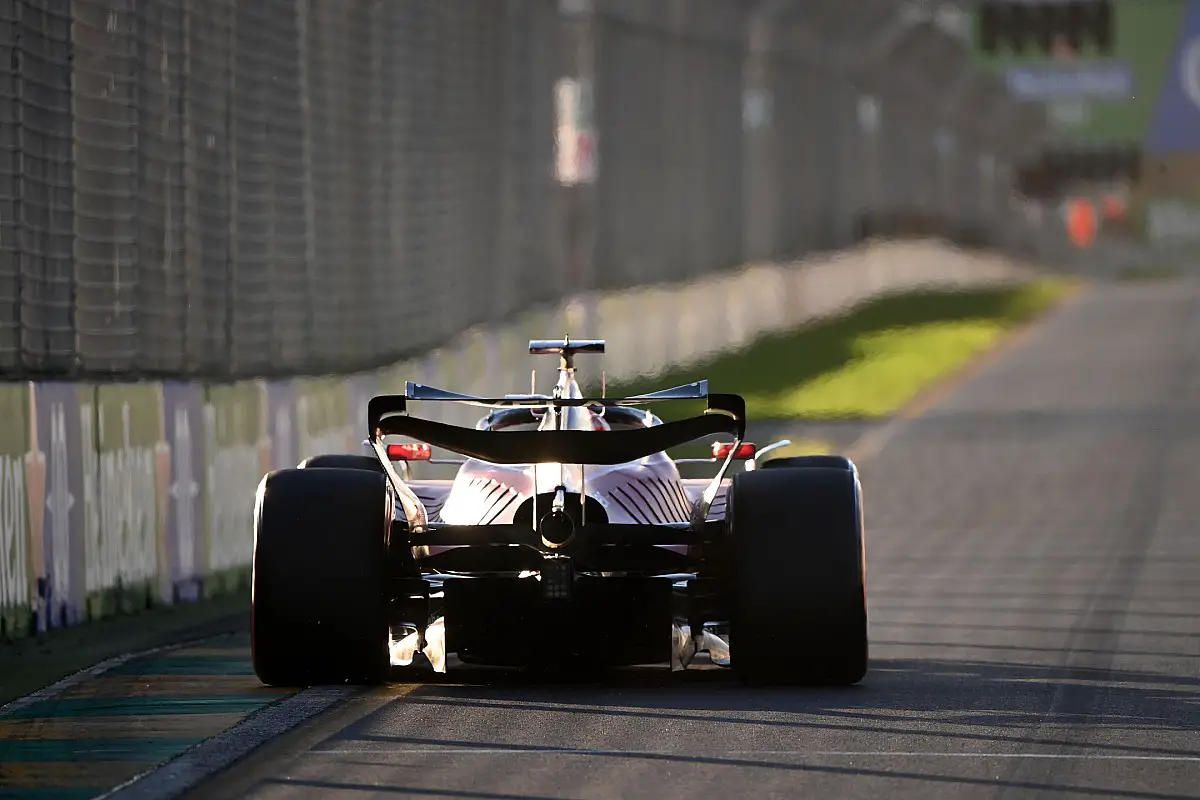Formula 1 is the pinnacle of motorsport, where speed, skill and strategy are pushed to the limit. But what if you could go even faster, with a simple push of a button – enter DRS F1?
That’s the power of DRS, or Drag Reduction System, a device that can boost your speed by up to 12 km/h on the straights and give you an edge over your rivals.
But how does DRS work, and what are its benefits and drawbacks? In this article, you will learn everything you need to know about DRS, from its history and development to its future and controversy.
You will discover how DRS has changed the face of Formula 1 racing, and why it is one of the most innovative and influential features of the sport. Read on to find out more about DRS, the ultimate overtaking aid in Formula 1.
What Is DRS In F1?
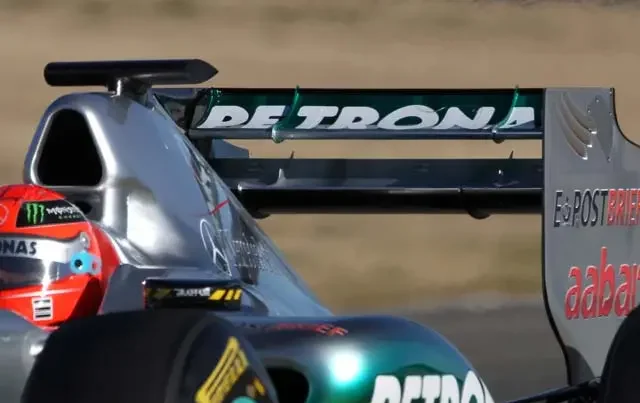
One of the key factors that affects the performance of the cars is the aerodynamic drag, which is the resistance that the air exerts on the moving vehicle. Drag reduces the top speed and acceleration of the car, and also increases the fuel consumption.
To overcome this problem, Formula 1 introduced a device called the Drag Reduction System (DRS F1) in 2011.
DRS is a flap on the rear wing of the F1 car that can be opened and closed by the driver to reduce or increase the drag effect.
By opening the flap, the driver can gain more speed on the straights and have a better chance of overtaking the car in front. By closing the flap, the driver can restore the downforce and stability of the car in the corners.
How Does DRS Work in F1?
Decoding the DRS Formula: A Deep Dive into DRS Mechanics
As the pinnacle of motorsport, Formula 1 boasts cutting-edge technology designed to push the limits of speed and performance. Among these innovations, the Drag Reduction System (DRS) stands out as a game-changer in the quest for overtaking supremacy. In this chapter, we unravel the intricacies of DRS, exploring how this aerodynamic wizardry works to give drivers that crucial extra burst of speed.
The Anatomy of DRS: A Quick Overview
DRS – Purpose and Functionality
At its core, DRS is engineered to facilitate overtaking by minimizing aerodynamic drag on a Formula 1 car. By adjusting the angle of the rear wing, DRS reduces resistance to the airflow, allowing the car to achieve higher speeds on the straights.
DRS – Strategic Deployment
DRS is not a constant feature but a tool that drivers can strategically deploy. Activation is restricted to specific zones on the racetrack, where the conditions are ripe for overtaking. This ensures that DRS is a calculated advantage rather than an omnipresent force.
Understanding DRS Activation
DRS – Proximity Requirement

To activate DRS, a driver must be within one second of the car in front when crossing a designated DRS detection point. This proximity requirement adds a tactical element to DRS deployment, emphasizing the importance of maintaining close distances for strategic overtaking opportunities.
DRS – Detection and Activation Points

The DRS process involves two key points on the track. The detection point determines the time gap between cars, while the activation point is where DRS can be deployed if the proximity criterion is met. This dual-point system ensures fair and regulated usage.
The Mechanism Behind the DRS Magic
DRS – Adjusting the Rear Wing
When a driver successfully meets the activation criteria, the rear wing of the car undergoes a rapid adjustment. The flap of the wing opens, reducing the angle of attack and minimizing drag. This adjustment is temporary, occurring only for a limited duration to provide a burst of speed during overtaking maneuvers.
DRS – Closing the Wing

The DRS system automatically closes the rear wing when the driver applies the brakes, enters a DRS-disabled zone, or lifts off the throttle. This ensures that the aerodynamic advantage is only active when it is tactically beneficial and aligns with the race regulations.
The Impact of DRS on Racing Dynamics
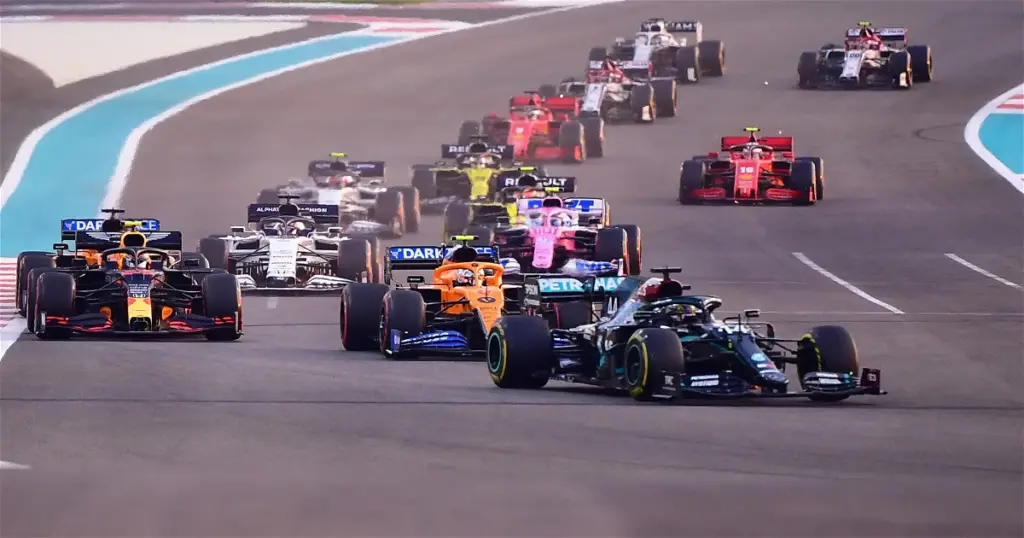
DRS Enhancing Overtaking Opportunities
DRS has revolutionized Formula 1 racing by creating additional opportunities for overtaking, especially on circuits where long straights provide ideal conditions for its deployment.
DRS Strategic Considerations
Teams and drivers carefully plan the timing of DRS activation to maximize its impact while minimizing the risk of counterattacks. The tactical use of DRS adds a layer of strategy that elevates the competition.
History of DRS In F1
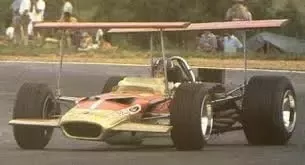
The idea of using a movable rear wing to adjust the drag level of a racing car is not new. In fact, it dates back to the 1960s, when some cars experimented with manually operated wings that could be tilted by the driver.
However, these wings proved to be dangerous and unreliable, and were soon banned by the regulations.
In 2009, Formula 1 introduced another device called the Kinetic Energy Recovery System (KERS). This allowed drivers to store and release electrical energy from braking to boost their speed.
KERS was intended to improve overtaking, but it had limited effect and was not widely adopted by all teams.
In 2010, Formula 1 faced a problem of lack of overtaking and exciting racing. It was partly due to the aerodynamic design of the cars. This made it difficult for them to follow each other closely.
To address this issue, Formula 1 decided to introduce DRS as a new overtaking aid for 2011.
Adoption and Development of DRS In F1
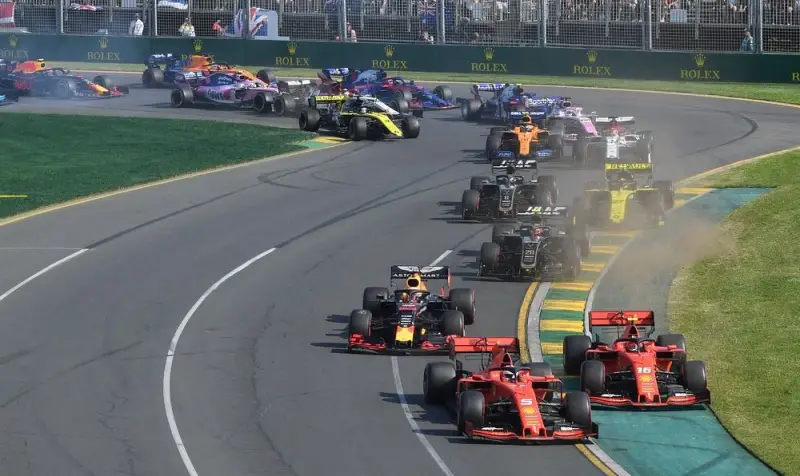
DRS F1 was first used in the 2011 Australian Grand Prix. It was initially met with mixed reactions from drivers, teams and fans.
Some praised it for creating more overtaking opportunities and making races more exciting. Others criticized it for being artificial and unfair.
The rules for using DRS have been tweaked over the years to balance its effectiveness and safety. The main rules are:
- DRS can only be used in designated zones on each track, which are marked by detection and activation points.
- DRS can only be activated when a driver is within one second of another car at the detection point.
- DRS can only be used during a race, not during qualifying or practice sessions.
- DRS is automatically deactivated when a driver brakes or lifts off the throttle.
The FIA monitors and adjusts the length and location of the DRS zones for each race. They depend on factors such as track layout, weather conditions and safety concerns.
According to Formula 1’s official website, DRS has increased overtaking by an average of 35% per race since its introduction.
When Can You Use DRS in F1?
Designated DRS Zones
DRS is not a carte blanche for drivers; its usage is confined to specific sections of the racetrack known as DRS zones. These zones are carefully chosen to maximize overtaking opportunities, typically occurring on long straights where aerodynamic advantage plays a pivotal role.
Activation Conditions
Proximity to the Leading Car
For a driver to activate DRS, they must be within one second of the car ahead as they cross a designated DRS detection point. This requirement emphasizes the strategic element of DRS deployment, encouraging close racing and increasing the chances of successful overtakes.
Detection and Activation Points
The process involves two key points on the track: the DRS detection point and the DRS activation point. The former is where the time gap between cars is measured, while the latter marks the location where a driver can deploy DRS if they meet the proximity criterion. These points are distinct to ensure fair and regulated usage.
Exceptions and Considerations
Yellow Flags and Safety Car Periods
While DRS adds excitement to races, safety is paramount. The system is typically disabled when there’s a yellow flag in the DRS zone or during safety car periods. This precautionary measure ensures that drivers focus on maintaining safe distances and adhere to track conditions.
Who Activates DRS in F1?
Driver’s Proximity as the Catalyst
Activation of DRS is firmly in the hands of the drivers. To trigger this performance-boosting feature, a driver must find themselves within one second of the car in front as they cross a designated DRS detection point.
This requirement places the onus on the racer’s skill, precision, and strategic awareness to gain the coveted advantage.
Detection and Activation Points: Understanding the Dynamics
The activation process involves two crucial points on the track: the DRS detection point and the DRS activation point. The former marks where the time gap is measured, while the latter is the location where a driver can unleash the potential of DRS if they maintain the required proximity.
This dual-point system ensures a fair and regulated activation process.
Team Strategy and Communication
Pit Wall Guidance
While the ultimate decision to activate DRS lies with the driver, teams play a crucial role in strategy. Pit wall engineers and strategists analyze race dynamics, advising drivers on when to deploy DRS based on the overall race strategy.
This collaborative effort adds an additional layer of complexity to the decision-making process.
Real-time Data Analysis
Modern Formula 1 cars are equipped with advanced telemetry systems that provide real-time data to the teams. This data includes information about the gap between cars, helping teams and drivers make informed decisions about DRS activation.
The marriage of human intuition and technological insights is key to maximizing the benefits of DRS.
Staying Ahead: Tactical Considerations
Timing and Overtaking Opportunities
Strategic DRS activation involves impeccable timing. Drivers must assess overtaking opportunities, track conditions, and the race scenario to make split-second decisions on when to deploy DRS.
The art lies not only in being fast but in choosing the right moments to gain a competitive edge.
Teams Behind DRS
DRS is a standardized system that is supplied by Formula 1’s technical partner McLaren Applied Technologies. However, each team has some freedom to design their own rear wing and DRS mechanism within certain parameters.
Some teams have been more innovative than others in developing their DRS systems over the years. For example:
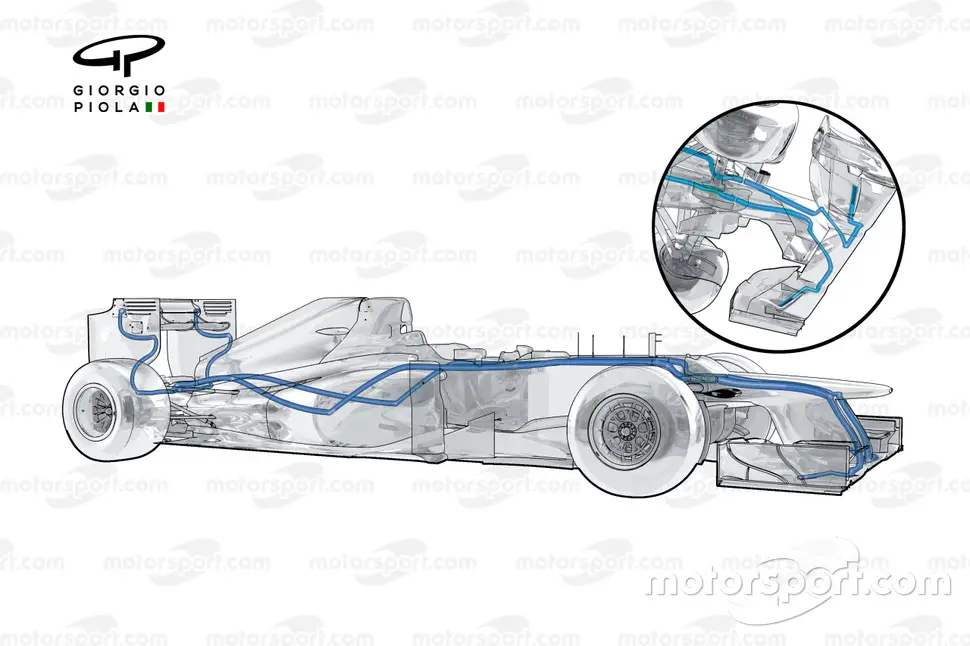
- Mercedes introduced a double-DRS system in 2012. It linked the rear wing flap with a duct in the front wing that also reduced drag when DRS was activated.
- Lotus developed a passive-DRS system in 2013, which aimed to open and close the rear wing flap automatically. It was based on speed and airflow, without requiring driver input.
- Ferrari experimented with a drag reduction device (DRD) in 2013. It used a periscope-like structure on top of the engine cover. This channeled air to the rear wing and reduce drag when DRS was activated.
However, none of these systems proved to be consistently effective or reliable. They were eventually abandoned or banned by the regulations.
How Many Times can you Use DRS in F1?
Unraveling the DRS Usage Limits: A Strategic Guide
As Formula 1 races unfold with heart-stopping speed, the Drag Reduction System (DRS) emerges as a pivotal tool for drivers seeking that critical advantage on the track. One burning question frequently surfaces in the minds of racing enthusiasts: How many times can you use DRS in a Formula 1 race? In this chapter, we delve into the regulations and strategic considerations that govern the usage limits of DRS.
Navigating the DRS Activation Zones
Designated Activation Zones
DRS can only be deployed in specific zones on the racetrack, carefully chosen to maximize overtaking opportunities. These zones typically occur on long straights where aerodynamic drag reduction can significantly impact straight-line speed.
The Proximity Factor
To activate DRS, a driver must be within one second of the car in front when crossing a designated DRS detection point. This proximity factor adds a strategic dimension, encouraging close racing and ensuring that DRS is used as a tool for overtaking.
The Frequency of DRS Deployment
Permitted Usage Frequency
The regulations set by the Fédération Internationale de l’Automobile (FIA) do not specify a fixed number of times DRS can be used in a race. Instead, the frequency is tied to the proximity rule. As long as a driver remains within one second of the car ahead at each DRS detection point, they have the opportunity to activate DRS in the designated zones on multiple occasions.
Dynamic Racing Conditions
The actual number of DRS activations varies from race to race and depends on the race dynamics. Factors such as the length of DRS zones, the number of straights on a particular circuit, and the competitiveness of the field contribute to the frequency of DRS usage.
Strategic Decision-Making
Tactical DRS Deployment
Teams and drivers must strategically decide when to deploy DRS for maximum impact. Timing is crucial, and activating DRS at opportune moments can be a game-changer in overtaking maneuvers.
Balancing Risk and Reward
While DRS offers a valuable speed boost, its deployment requires careful consideration. Drivers and teams weigh the potential gains against the risk of compromising their position or falling prey to counterattacks from competitors.
Adapting to Changing Circumstances
Yellow Flags and Safety Car Periods
It’s essential to note that DRS is generally disabled during yellow flag conditions or when the safety car is deployed. Safety remains a top priority, and DRS is temporarily suspended to ensure responsible racing under challenging circumstances.
Do all F1 cars have DRS: Not a Universal Mandate?
While DRS adds excitement to races, its use is regulated by the Fédération Internationale de l’Automobile (FIA), the governing body for motorsport. Regulations dictate designated DRS zones, activation conditions, and safety precautions to ensure fair and controlled implementation.
Team-Specific Decisions
Contrary to a universal mandate, the adoption of DRS is a team-specific decision. While the majority of Formula 1 teams choose to equip their cars with DRS technology, there is no absolute requirement for all teams to do so.
While in theory some teams may consider not to including DRS in their design for various strategic reasons, the reality is that their cars would be at a strategic disadvantage and would not have a competitive edge.
Impact on Racing Dynamics
Strategic Variability
The variability in DRS adoption adds a layer of strategic complexity to Formula 1 races. Teams with DRS-equipped cars have an additional tool for overtaking, while those without must rely on alternative strategies to maintain a competitive edge.
Fan Engagement
For avid fans, understanding the nuances of DRS adoption enhances the viewing experience. The interplay of different team strategies and technological choices contributes to the drama and unpredictability that characterize Formula 1 races.
Future of DRS
DRS remains in Formula 1 for at least another season, as part of the new technical regulations that came into force in 2022.
The new rules aimed to make the cars more aerodynamically efficient and less sensitive to turbulent air. This was intended to allow them to race closer together and overtake more naturally.
However, Formula 1’s sporting boss Ross Brawn has stated that he hopes to phase out DRS in the future. This will be done when the new cars prove to be capable of producing exciting racing without it.
DRS has been a controversial but influential feature of Formula 1 for the past decade. It has helped to create more overtaking and spectacle, but it has also raised questions about the purity and fairness of the sport. Whether it will stay or go, DRS has certainly left its mark on the history of Formula 1.
D1 DRS and KERS Explained
1. DRS: The Overtaking Weapon
– Functionality and Purpose
- DRS, or Drag Reduction System, is designed to facilitate overtaking by reducing aerodynamic drag on a Formula 1 car.
- The rear wing of the car is adjusted, allowing for increased straight-line speed in specified zones on the racetrack.
– Activation Criteria
- Drivers can activate DRS if they are within one second of the car in front when crossing a designated DRS detection point.
- Detection and activation points ensure fair and regulated use of the system.
– Strategic Considerations
Teams and drivers strategically deploy DRS to seize overtaking opportunities, emphasizing the tactical nature of Formula 1 racing.
KERS: Harnessing Energy for Speed
– Kinetic Energy Recovery System Explained
KERS is an energy recovery system that harnesses kinetic energy during braking and converts it into usable electrical energy.
– Boosting Acceleration
The stored energy can be deployed to boost acceleration, providing an additional burst of power to the car during specified periods.
– Strategic Integration
Teams strategically manage KERS usage to optimize lap times and maintain a competitive edge.
3. Symbiotic Relationship: DRS and KERS in Action
– Strategic Synergy
DRS and KERS often complement each other in race strategies, creating a powerful combination for overtaking maneuvers.
– Team Collaboration
Pit wall engineers and strategists work in tandem with drivers to synchronize the usage of DRS and KERS for maximum impact.
– Technological Advancements
Advancements in telemetry and real-time data analysis enable teams to make informed decisions about deploying these technologies.
4. Looking Ahead: Evolving Technologies
– Innovation in Formula 1
Formula 1 is a dynamic sport, and both DRS and KERS technologies continue to evolve, with potential updates in regulations and enhancements in performance.
– Fan Engagement
Understanding DRS and KERS adds an extra layer of excitement for fans, as they witness the strategic battles unfold on the track.
Conclusion: A Symphony of Speed and Strategy
As Formula 1 continues to push the boundaries of technology and athleticism, DRS and KERS stand as symbols of innovation and strategic brilliance. Together, they create a symphony of speed and strategy, shaping the narrative of each race. Stay tuned for the next Grand Prix, where these technological marvels will once again take center stage in the quest for victory.

